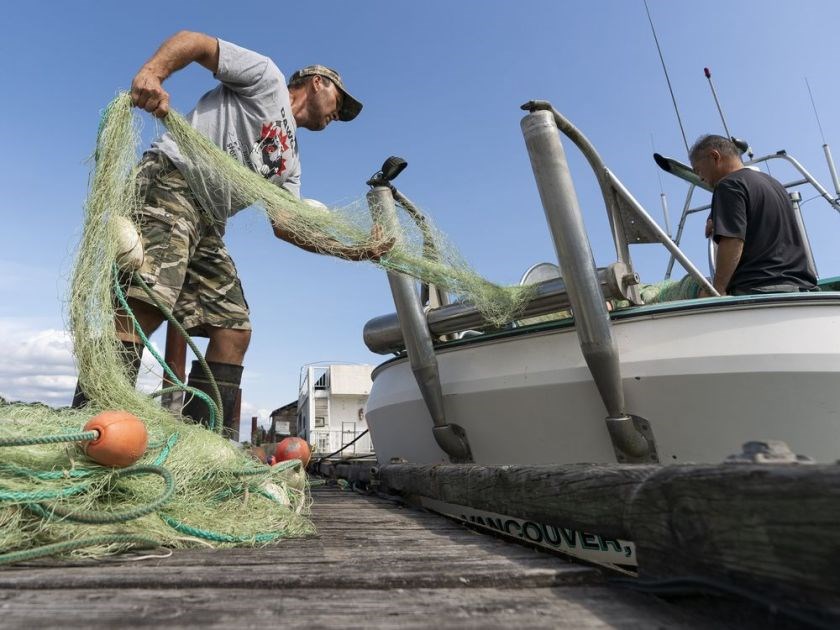The latest forecast for this year’s Fraser River sockeye run predicts an historic low of 283,000 fish, down more than 40 per cent from last year’s disastrous return.
“It’s an astonishing number,” says Richard Beamish, scientist emeritus with Fisheries and Oceans sa���ʴ�ý and the co-organizer of Gulf of Alaska scientific expeditions aimed at discovering what regulates salmon numbers.
Fraser River sockeye are emblematic of sa���ʴ�ý’s coast and its wild fisheries. They are valued by First Nations and the commercial and recreational sectors.
Returns have varied widely — with between two million and 28 million sockeye heading to the Fraser River for their home streams, according to a scientific paper covering 1980 to 2014 for Fisheries and Oceans. During that time, returns averaged 9.6 million.
But last year, numbers plummeted to 485,900, setting a record for low returns since record-keeping began in the 1800s.
The sa���ʴ�ý-U.S. Pacific Salmon Commission, which publishes weekly updates on Fraser River salmon, released its most recent forecast of 283,000 sockeye on Aug. 7.
Concerns about Fraser River sockeye are longstanding. In 2009, three consecutive years of low Fraser sockeye returns led to the Cohen Commission inquiry, but no one “smoking gun” was found.
“Further research is crucial to understanding the long-term productivity and sustainability of Fraser River sockeye salmon,” Bruce Cohen wrote in his report.
“Notably, a better understanding is needed of the migratory and feeding patterns in all marine areas. I heard enough evidence about warming waters to conclude that climate change is a significant stressor for sockeye and in combination with other stressors, may determine the fate of the fishery.”
The mechanisms in the ocean that affect survival are still unknown today, Beamish said Wednesday from Nanaimo.
That’s why he and fellow scientist Brian Riddell raised millions of dollars to fund expeditions to the Gulf of Alaska in 2019 and this year to evaluate salmon and conditions in the high seas.
Even if this year’s Fraser River late-run sockeye numbers come in stronger than forecast, results will still be “very poor,” Beamish said.
At the same time, sockeye returned in strong numbers to Vancouver Island’s Alberni Inlet this season, allowing commercial fisheries to proceed.
Alberni Inlet and Fraser River sockeye both spend a couple of years in the Gulf of Alaska where they experience the same mechanisms, Beamish said.
“We need to understand why that’s good news [for Alberni Inlet sockeye] and it is not good news for the Fraser. That’s what this is all about.”
Christina Burridge, executive director of the sa���ʴ�ý Seafood Alliance, whose members who make up most of the value of the province’s wild seafood sector, said she was not surprised by the low Fraser River forecast.
She figures ocean conditions that created a warm-water blob in the Gulf of Alaska, a weak brood year four years ago, and the continuing impact of the Big Bar landslide on the Fraser River all led to this year’s low numbers.
She believes low numbers are not a result of overfishing but, rather, changes in the ocean. “Something has changed out there fundamentally.”
The majority of coast-wide returns of all salmon species, with some exceptions, have been “dismal across the board this year,” Burridge said.
“Over the longer term, we need a concerted action plan to deal with both the short-term and the long-term consequences and we need to pay attention to freshwater habitat and lower Fraser habitat.”
Dane Chauvel, who is fishing for coho salmon off Haida Gwaii on Wednesday and is chair of the sa���ʴ�ý Salmon Marketing Council, said the north coast salmon fishery is “not bad,” but south coast fishermen are having a tougher time.
In the north, there was an unanticipated gillnet opening for Skeena River sockeye. Plus, the troll fishery for coho “hasn’t been stellar but it hasn’t been a bust either. So all things considered, I think we are kind of happy with the way it is going.” Another troll opportunity for spring salmon opens on Saturday in the Haida Gwaii area.



